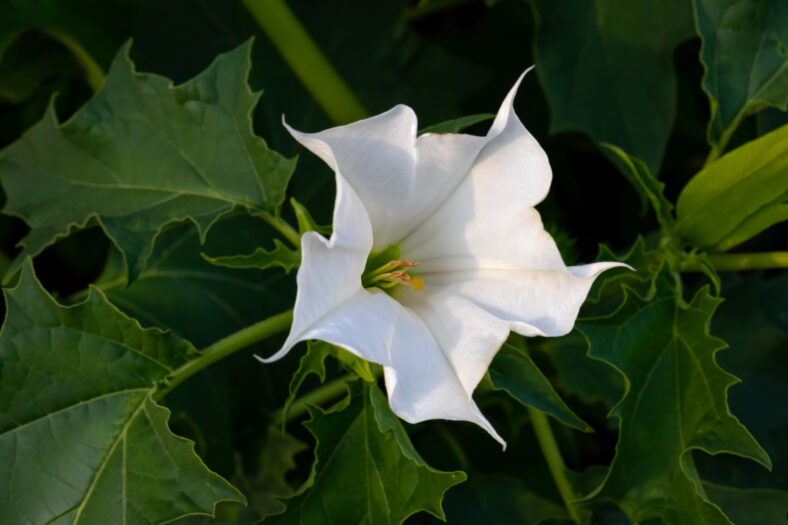The Dangerous Datura Flower Looks Like It Belongs In An Enchanted Garden, But It Has Ties To Ancient Rituals And Poisonings

The datura flower looks like it belongs in an enchanted garden, but it won’t grant you any magical wishes! This stunning, trumpet-shaped flower can be dangerous and has ties to ancient rituals, hallucinations, and even poisonings.
The plant was important to Native Americans and was used in their sacred ceremonies. If its psychedelic compounds are misused, the consequences are fatal.
The datura is a member of the nightshade family, which includes potatoes, tomatoes, petunias, and tobacco. It is also referred to as devil’s trumpets, moonflowers, and thorn-apple.
It is a sprawling perennial with green, triangular leaves. The leaves are covered with a layer of short, whitish hairs, giving them a gray sheen. When the leaves are crushed, they emit a foul odor. The sap can cause a skin rash in sensitive individuals.
The large, fragrant blossoms are white. Some species have a bit of purple on them. They release a sweet scent, especially at night when the flowers open. They attract night-flying pollinators like sphinx moths, their primary pollinators.
The moths have the longest tongues of any moth. They can get up to 14 inches in length and are designed to extract nectar from deep within flowers. Their caterpillars feed on the plant and even develop some secondhand toxicity from it.
The datura is native to central California and northern Mexico and can be found in other parts of the southwestern United States. The plant has a fairly long growing season, which takes place from April to October.
There is plenty of evidence that these plants were used culturally in the New World and in Asia for at least 3,000 years.
All datura plants contain a number of alkaloids, especially in the seeds and flowers, that are toxic and hallucinogenic. The level of toxicity depends on the age of the plant and growing conditions.

Sign up for Chip Chick’s newsletter and get stories like this delivered to your inbox.
Serious illness or death can result from ingestion. They are also poisonous to cattle, sheep, and horses. Some states and municipalities have banned the cultivation of datura.
Since ancient times, datura has been used for medicinal and ceremonial purposes. The root was considered a cure for cuts, bruises, and gunshot wounds. Gamblers would keep the root in their pockets to guide their bets.
In southern California, many Native American tribes used datura to achieve hallucinations during sacred rituals. The resulting dreams can help provide guidance for the future. They also used the smoke from burning datura to relieve the pain of earaches and rheumatism.
Even though datura is extremely toxic if ingested, it is still popular in modern gardens. It is commonly used as an ornamental plant. Before adding the plant to your garden, make sure to check your state’s guidelines to see if this is allowed.
More About:News





